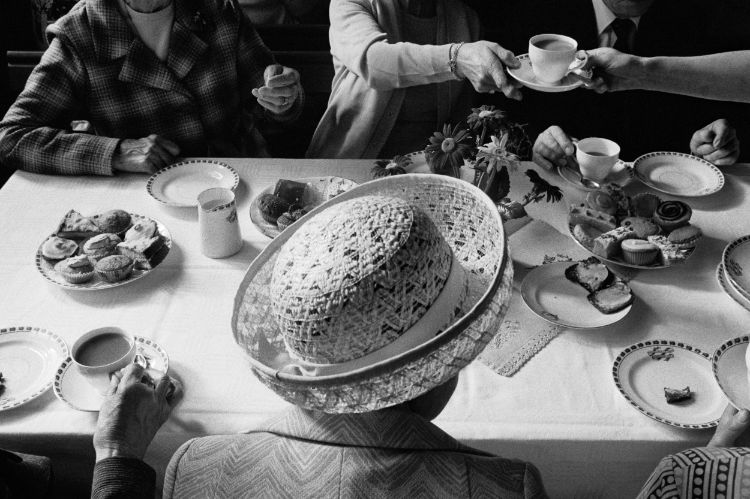
Mayor of Todmorden’s Inaugural Banquet, Calderdale, 1976
Upon graduating from Manchester Polytechnic, Martin Parr moved to Hebden Bridge, West Yorkshire in 1975. By his move to Hebden Bridge, he had already established an interest in kitsch, leisure pursuits and traditions. Whilst still a student at Manchester, Parr developed a close friendship with fellow photography student, Daniel Meadows, and in the summer of 1972, the pair worked as photographers at Butlin’s Holiday Camp in Filey, Yorkshire, producing portraits of the guests. In their spare time they were free to make their own work around the camp. Parr’s work focused on the aspects of kitsch he found fascinating, including the organised games and nightlife entertainment.
For his diploma show, Parr constructed a freestanding room-set installation piece that incorporated his growing interests in the domestic interior with his wry humour and aptitude for incisive documentary photography. The room-set was wallpapered in a floral design, and suffused with cheap perfume and tape recordings of the soundtracks of The Sound of Music and South Pacific. Parr framed his works in ornamental frames he had purchased from Woolworths.
It was to be in Hebden Bridge and the surrounding area of Calderdale, though, that Parr found his first and greatest source of inspiration. He gravitated towards everything in the small town that appeared unusual or antiquated, photographing the Ancient Order of Hen-Pecked Husbands, the Sowerby Bridge Mouse Show and the Todmorden Natural History Society ramblers. His work from this period was intimate and nostalgic, with a subtle humour, and showed a clear interest in exploring traditional community values and their decline.
Together with fellow Manchester graduate, Susie Mitchell (later to become Parr’s wife), Parr began documenting the communities that centred around the local rural Baptist and Methodist chapels, particularly Crimsworth Dean Methodist Chapel on the moors above Hebden Bridge. The non-conformist chapels had been a focal point and thriving community hub for isolated farming communities but by the early 1970s, when Parr arrived, were closing down. Mitchell would interview members of the diminishing, and often elderly, congregation, as Parr photographed them. The series, The Non-Conformists, provided a powerful narrative about disappearing rural communities
